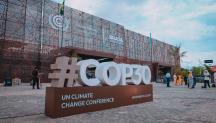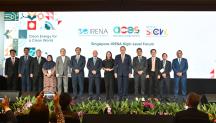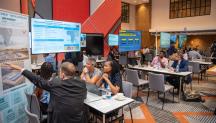

Climate Change and Renewable Energy: The Good, The Bad, and The Necessary
Newsletter
During the last day of IRENA’s fifth Assembly today, experts from across the climate change sphere kicked off discussions on the role of renewable energy in climate change. IRENA Director-General Adnan Amin, Executive Director of the UN Climate Change Secretariat Christiana Figueres, French Minister for Ecology, Sustainable Development and Energy Ségolène Royal and Peru Climate Change Representative Rómulo Acurio, led discussions from the panel.
It was clear from the session that (1) there is no solution to climate change without enabling policies for renewable energy and (2) there is no global renewable energy uptake without a strong climate agreement.
Here is an overview of the bad, the good and the just plain necessary when it comes to climate change and renewable energy:
THE BAD:
- 2014 was the hottest year on record.
- The release of the IPCC fifth assessment report confirmed that emissions are at their highest level in over 800 years and must fall by 40 - 70 percent by 2030 if we are to stay at or below the 2 degree greenhouse gas level.
- Policies currently in place will not decrease emission levels enough to avoid catastrophic climate change.
- Global emissions continue to grow and vested interests pose a serious threat to changing the status quo.
THE GOOD:
- Growing urgency has led to growing engagement of stakeholders at local, national and regional levels.
- Many countries are moving on commitments:
- the EU aims to cut emissions by at least 40 percent of 1990 levels by 2030
- China and the US have agreed to limit their combined emissions
- India announced its plans to increase its solar power capacity by 100 megawatts by 2022
- France announced it would no longer provide development finance for the building of coal-fired power stations
- Countries have pledged resources amounting to over 10 billion US dollars to the Green Climate Fund.
- REmap2030 shows that doubling the global share of renewable energy would mitigate climate change, and actually save money in the long run while creating millions of jobs worldwide.
- Renewable energy technologies are now readily available – they are robust and efficient, increasingly able to generate power even in sub-optimal conditions. Prices continue to decline, making them cost-competitive
- Investment in renewables has risen from 55 billion dollars in 2004 to 310 billion dollars in 2014
- Renewables are ready to take centre stage as viable, affordable and available solutions to climate change
THE NECESSARY:
- REmap 2030, shows that doubling the share of renewables could help mitigate climate change, but this would require investments in clean energy in the order of 44 trillion US dollars until 2050, compared to a business as usual scenario.
- USD 90 trillion will be invested in infrastructure in the next 15 years. This development must be done using technologies that ensure a low carbon future.
- Leaders must agree a new climate deal in the next 10 months. We know it is possible to achieve the 2 degree objective and avoid the catastrophic impacts of climate change, if we continue and accelerate action on climate change right now.




